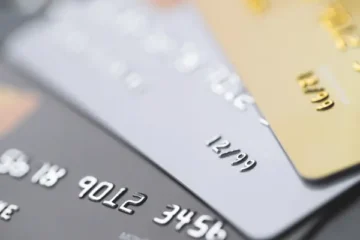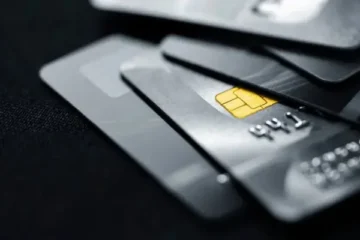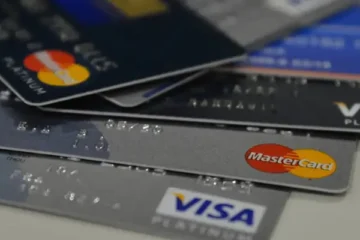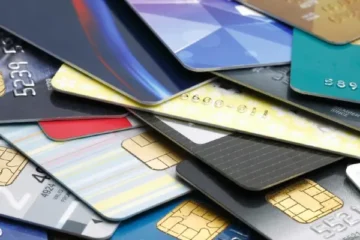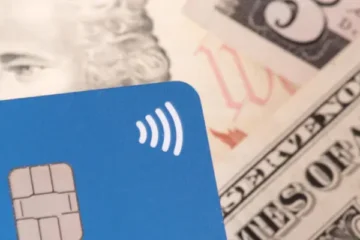How to Reduce High-Interest Debt Efficiently
Struggling to stay afloat? Feel like your paycheck disappears into your credit card and never comes back? You’re not alone.
Advertisement
A lot of people in the U.S., especially those living on a tight budget, are dealing with high-interest debt every single month. But here’s the deal — there’s a way out. And no, you don’t need to be rich to make it happen.
Advertisement
In this article, we’re gonna walk you through exactly how to reduce high-interest debt efficiently, using practical, real-life strategies that actually work.
What Is High-Interest Debt?
Let’s break it down real quick. High-interest debt is any debt that charges you a ton of money just for borrowing — we’re talking about credit cards, payday loans, title loans, or emergency personal loans with sky-high interest rates.
Advertisement
Sounds harmless at first, right? But here’s the catch: most of these debts come with compound interest — which means you’re not just paying interest on what you borrowed, but also on the interest that’s already piling up.
It’s like debt with a snowball effect: the longer you take to pay it off, the bigger (and scarier) it gets.
If you’re only making minimum payments on your credit card each month, chances are you’re barely touching the original balance.
That $500 shopping spree from last year? You might still be paying for it five years from now — and end up shelling out double or even triple the original amount.
That’s why high-interest debt is such a trap — it grows fast, eats your income, and makes it super hard to catch a financial break.
Why You Should Make High-Interest Debt Your Top Priority
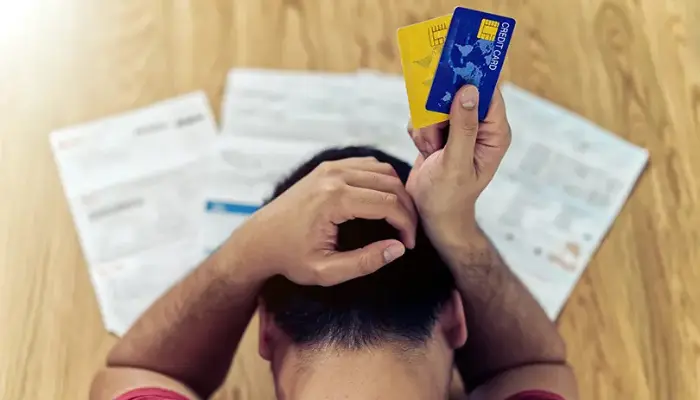
Here’s the truth: carrying high-interest debt is like setting your money on fire every month. That balance isn’t just sitting there — it’s growing. The longer you let it roll, the more you owe, and the harder it gets to catch up.
Worse? That constant balance drags down your credit score, and once that drops, everything else gets more expensive — car payments, home loans, apartment rentals, insurance rates — they all go up just because you’ve got bad credit tied to high-interest debt.
In other words: this kind of debt costs you way more than just the monthly payment. It steals your freedom, eats into your future, and keeps you stuck in survival mode. That’s why knocking it out should be your #1 mission — the faster you deal with it, the faster you can breathe again.
How to Know Which Debts to Pay Off First
When you’re dealing with multiple debts, it’s tempting to just throw money at whichever one is yelling the loudest. But if you really want to get out of the hole faster — and save money doing it — you need a plan, not panic.
Some debts are way more dangerous than others (spoiler: credit cards usually top the list), and figuring out which one to tackle first can make a huge difference. It’s all about being strategic, not just reactive.
Here’s a step-by-step way to get organized and decide which debt deserves your attention first:
Step-by-step to organize your debt:
- Write down everything: creditor name, total balance, minimum monthly payment, and interest rate.
- Highlight the ones with the highest interest: credit cards are usually the worst offenders.
- Choose your strategy:
- Avalanche method: pay off the highest-interest debt first (saves more money in the long run).
- Snowball method: pay off the smallest debt first (great for motivation and quick wins).
How to Negotiate with Lenders to Lower Your Interest Rates
A lot of people don’t realize this, but interest rates aren’t always final. You don’t have to just accept whatever your lender throws at you. In fact, most companies would rather work with you — and keep getting something — than risk you defaulting and paying nothing.
If you’re serious about paying off your debt, negotiating for better terms is a smart and underrated move. It might feel uncomfortable at first, but a simple phone call can actually save you hundreds (or even thousands) of dollars over time.
The key is to be prepared, stay calm, and ask the right way. Below are some practical tips that can boost your chances of getting a “yes” — without getting scammed or overwhelmed.
Tips for negotiating:
- Call your lender or card issuer directly
- Be honest about your situation and say you’re trying to pay off the debt but need better terms
- Ask for a lower interest rate, more time to pay, or even a lump-sum discount
- Be polite but firm — and don’t be afraid to call back if the first rep says no
You can also use third-party companies that negotiate on your behalf, but watch out for scams and high fees.
Should You Replace a High-Interest Debt with a Lower One?
Heck yes — if you’re stuck paying sky-high interest, swapping it out for something cheaper is one of the smartest financial moves you can make.
Think about it: if your credit card is charging you 25% APR, and you qualify for a personal loan at 8% or 9%, that’s a massive difference. You could pay off your balance faster and save a chunk of cash along the way.
This strategy is known as debt refinancing (or “debt swapping” if you prefer to keep it casual). The idea is simple: take out a new loan with better terms and use it to wipe out your expensive debt.
Done right, this can give you breathing room and help you actually make progress instead of just surviving month to month.
Popular options in the U.S. include:
- Low-interest personal loans from banks, credit unions, or online lenders like SoFi or Upstart
- Home equity loans or auto title loans, where you use your house or car as collateral (more risk, but way lower interest)
- Balance transfer credit cards offering 0% APR for 12–18 months — great if you can commit to paying it off during that window
This only works if you don’t rack up new debt afterward. If you pay off your credit card and start spending on it again, you’re just trading one trap for another.
Bottom line? If you’re disciplined and ready to break the cycle, replacing high-interest debt with something more manageable can be a total game-changer.
How to Consolidate Debt into One Lower Monthly Payment
If you’re drowning in bills from multiple credit cards or loans, debt consolidation might be exactly what you need to breathe again.
The idea is simple: instead of juggling five different payments (all with different due dates and crazy interest rates), you roll them into one single monthly payment — ideally with a much lower interest rate.
It’s like hitting the “reset” button on your debt. You’re not erasing what you owe, but you’re making it a whole lot more manageable.
Why it works:
- Less stress – One payment, one due date, less headache
- Lower interest – Save money over time instead of feeding the banks
- Credit score boost – Paying consistently on one loan can improve your report
Where can you get a debt consolidation loan?
- Traditional banks like Wells Fargo, SoFi, or Marcus by Goldman Sachs
- Peer-to-peer lenders like LendingClub, Upstart, or Payoff
- Financial apps that offer personal loan services with built-in budgeting tools
Don’t rush into anything. Always check the fine print — that means understanding the total APR, any origination fees, and the full repayment schedule. Some deals look sweet on the surface but come with sneaky charges.
If done right, consolidation can simplify your financial life and save you serious money — just make sure the math works in your favor.
Simple Organization Tips to Avoid More Debt Later
Paying off debt is a big win — but let’s be real, staying out of debt is the real challenge. It’s easy to slip back into the same habits if you’re not keeping your finances in check. That’s why getting organized isn’t just helpful — it’s necessary.
You don’t need to be a math whiz or live on spreadsheets 24/7. Just a few small habits can make a huge difference in keeping your money under control and your debt from creeping back in.
Here’s how to stay on track:
- Track every dollar – Seriously, know where your money’s going. Use a notebook, your phone’s notes app, a spreadsheet, or free budget apps like Mint or EveryDollar.
- Follow the 50/30/20 rule – A simple way to split your income:
- 50% for needs (rent, groceries, utilities)
- 30% for wants (Netflix, dining out, fun stuff)
- 20% for savings and paying off debt
- Cut the waste – Cancel subscriptions you don’t use, stop buying random stuff just because it’s on sale, and keep takeout to a minimum.
- Build a mini emergency fund – Even $10/week adds up. Having a safety net helps you avoid turning to credit cards when life throws a curveball.
The goal isn’t perfection — it’s progress. The more aware and intentional you are with your money, the easier it gets to stay debt-free for good.
Side Hustles to Speed Up Your Debt Payoff
Let’s be honest — sometimes just cutting back on spending isn’t enough to get ahead. If the bills keep stacking up and your paycheck only stretches so far, it might be time to flip the script and bring in some extra cash.
The good news? You don’t need to start a whole new career or launch a business. There are plenty of simple side hustles you can do in your free time to help speed up your debt payoff. Even making an extra $100 or $200 a month can move the needle in a big way when every dollar counts.
Below are some realistic, low-barrier ideas to help you boost your income and put that money straight toward crushing your debt — not adding more.
Ideas for extra income:
- Sell clothes, electronics, or furniture on Facebook Marketplace or Craigslist
- Deliver for Uber Eats, DoorDash, or Instacart
- Freelance online (writing, graphic design, virtual assistant work)
- Pet-sitting with Rover or offering handyman services locally
- Use cashback and coupon platforms like Rakuten or Honey
Every extra dollar should go straight to your debt — not to a shopping spree.
How to Stay Debt-Free After You Pay It All Off
First off — huge congrats! If you’ve made it this far, it means you either paid off your debt or you’re super close. That’s a big deal, and you should definitely celebrate. But here’s the thing: getting out of debt is only half the battle — the real challenge is staying out for good.
After all that hard work, the last thing you want is to slip back into old habits and start the cycle all over again. Now’s the time to shift your mindset from “surviving debt” to building real financial freedom.
The tips below will help you protect everything you’ve accomplished — and set yourself up for a future that doesn’t rely on credit cards to get by.
Here’s how to protect yourself:
- Keep your credit usage under 30%
- Set up alerts for spending and due dates
- Set new goals (saving for a house, car, vacation, retirement)
- Keep learning the basics of financial literacy
- Use credit cards smartly — for rewards or building credit, not for survival
And most importantly: be kind to yourself. Everyone makes mistakes. What matters is how you bounce back.
High-interest debt is brutal — but it’s not unbeatable. With the right mindset and strategy, you can get out, stay out, and take control of your finances.
So remember: get organized, negotiate, swap expensive debt for cheaper options, consolidate when it makes sense, and stay consistent. One step at a time is all it takes. Your future self will thank you big time.
